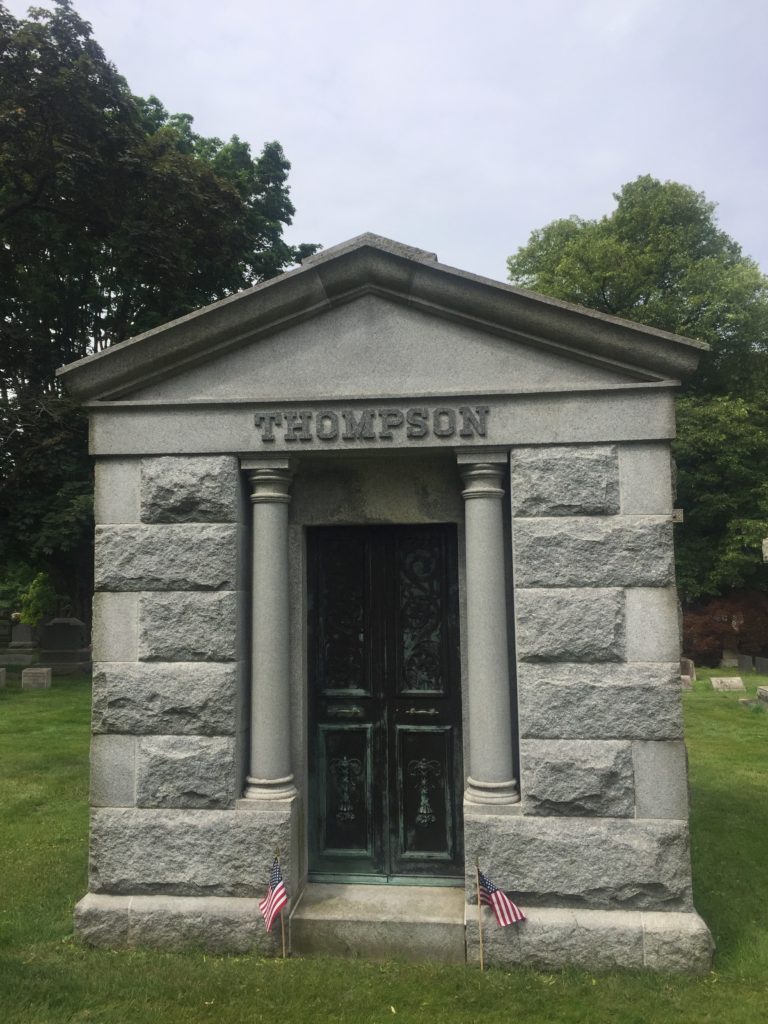Erik Visits an American Grave, Part 1,016
This is the grave of J. Walter Thompson.

Born in Pittsfield, Massachusetts in 1847, James Walter Thompson grew up in the area. He was in the Navy during the Civil War, serving on the USS Saratoga. This led to a lifelong love of sailing, which I can’t say was the common response to Civil War service. He first begins to matter in the historical record in 1868 when he was still living in his home town. There was a religious magazine company named Carlton and Smith. They needed someone to become a bookkeeper. Thompson applied and he got the job. But he soon realized that the real money was selling ads, which the magazines needed. And he was very good at this.
In 1877, Thompson bought out Carlton and Smith and renamed it the J. Walter Thompson Company. Over the next few decades, he would revolutionize advertising. Now, we have to understand something about advertisements in this era and why Thompson is so critical. Late nineteenth century advertisements were all words. Long testimonials, few images. They really required a lot of patience to get through. I used to use a primary source reader when I taught the second half of the U.S. survey course that had a full chapter on how advertisements changed between about 1880 and 1920. It wasn’t based around Thompson per se but it told the story. The early ads are almost unreadable by our standards today. Thompson would change that through the use of increasingly sophisticated images and selling a product more than through long lies about its health benefits or testimonials by baseball players who probably could barely write themselves.
Instead, Thompson hired artists to find brand looks for particular companies. This was the first creative team in advertising history. Some of his work lasted long beyond his death. For example, his agency created the Rock of Gibraltar image to represent Prudential insurance. His advertising agency showed immediate results–turns out people like to look at cool images instead of read boring words–and the companies flocked to him. He incorporated his company in 1896 and then opened a London office in 1899. So he was making a ton of money in Europe too, taking long trips to get new accounts. Turns out not only Americans found visually appealing advertising effective.
Thompson got super rich through all of this. He was able to indulge his love of sailing. He bought a bunch of boats and became president of the New York Yacht Club, where he got to hob nob with the all rich people he loved. I’m sure they had lovely jokes about immigrants and women and workers…..He was rich enough that he build an entire opera house for his wife in Cranford, New Jersey in 1892.
Later in his career, Thompson, who knew damn well he was a visionary and loved being so, went far to explain his principle of brand management to companies and other advertising agencies to providing his own ads for the company that explored the point. He finally sold the company in 1916 so he could retire and live in style. The company remains around today, though it effectively ended its history as an independent agency in 2018 when it was bought by the holding company WPP. I don’t know precisely when this was created, but among the agency’s accomplishments over time was creating the modern grilled cheese sandwich in an advertisement for Kraft. Regardless of what we might think about Kraft’s cheese-esque foodlike substance, is there anyone who doesn’t love a grilled cheese?
I’d like to write more here on the man, but it’s very difficult to go deep on the man easily due to the fact that the vast majority of literature out there is about the company and of course they have the same name. You all can expand on this at your leisure in comments.
J. Walter Thompson died in 1928, at the age of 79. He is buried in Woodlawn Cemetery, The Bronx, New York.
If you would like this series to visit other advertising executives, you can donate to cover the required expenses here. Leo Burnett is in Chicago and F. Wayland Ayer is in Philadelphia. Previous posts in this series are archived here.


